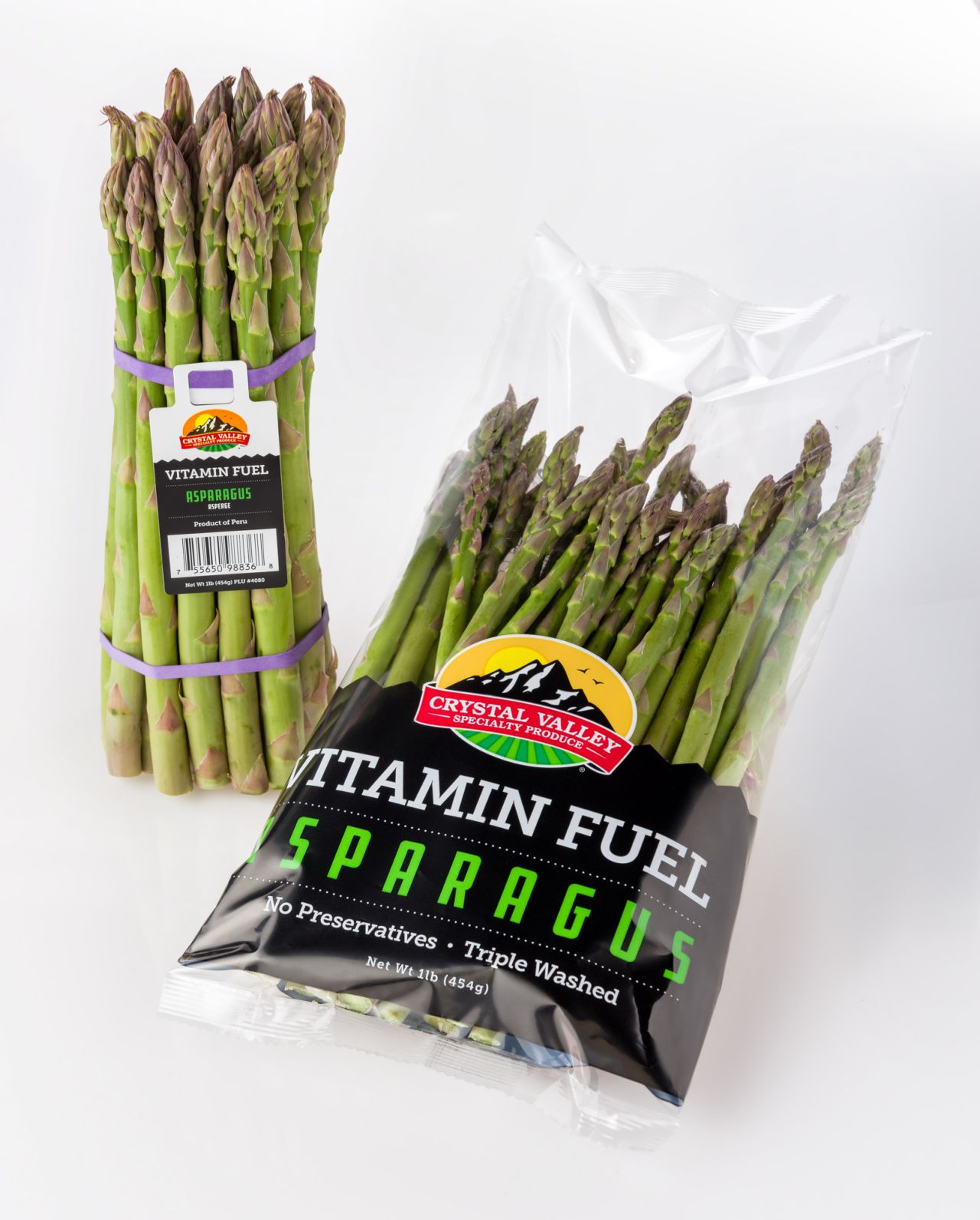Peruvian asparagus is always reliable for Miami, Fla.-based Crystal Valley Foods.
“Peru is a reliable source for asparagus 52 weeks a year,” Katiana Valdes, director of marketing and business development for Crystal Valley Foods, Miami. “It is because of this consistency that we make sure we always have Peruvian asparagus to supplement our other sourcing regions throughout the year.”
Valdes said Crystal Valley brings in product from Peru year-round, with peak volume typically in the fall, from September/October through December.
Crystal Valley Foods expects production this year will be similar to last year. However, imports may grow because of increasing asparagus demand in the U.S., she said.
No organic production is available from Peru because of fumigation requirements, but Valdes said Crystal Valley has an organic program in the spring Mexican asparagus season.
Disruptions
COVID-19 has resulted in increased costs across the supply chain, partly owing to labor shortages, which have caused labor costs to increase, she said.
“Packaging and transportation costs have also had significant increases,” Valdes said. “These increases have had and will have an impact on asparagus pricing until things get back to normal again.”
Marketing
For best results, Valdes said retailers can continue to educate consumers about asparagus uses and health benefits through traditional point-of-sale information as well as by sharing recipes and information on their websites and social platforms.
“In-store demos are also a great vehicle for increasing retail movement of both white and green asparagus and offer customers a chance to try the product, perhaps in a unique way that they might not have thought of before,” she said.
“Cross-merchandising complementary products is also helpful to increase sales. Asparagus is popular prepared with lemons, meats (steak) and bacon, so those products would be good to pair with the vegetable.”
In addition, Valdes said asparagus is a favorite for spring and summer cookouts, parties and family gatherings.
“It is quickly becoming a holiday staple, so retailers should cross-merchandise asparagus with meats and other grilling and holiday essentials,” she said. “It is also becoming a popular brunch item and can be added to quiches, frittatas and other egg dishes.”
Packaging
Value-added packaging is gaining steam, said Valdes. “We have many customers reaching out about value-added asparagus packs,” she said, noting inquiries about the marketer’s 8-ounce pack of asparagus tips and 12-ounce cut asparagus, as well as 1-pound and 2-pound bags.
Valdes said the value-added packs carry a few benefits from the retail and consumer standpoint:
- They are in a controlled-atmosphere bag, which helps extend shelf life.
- Depending on the type of pack, they are ready to eat or cook.
- Most of them come in a microwaveable bag.
“Even though COVID seems to be winding down in the United States, consumers continue to be in that mindset, meaning they continue to be concerned about cleanliness and health,” she said. “There is good demand for packaged produce that gives shoppers a sense of security.”
Packaged or value-added produce also typically comes with a scannable barcode, which helps with touchless or “scan and go” checkouts some retailers are moving toward, Valdes said.
